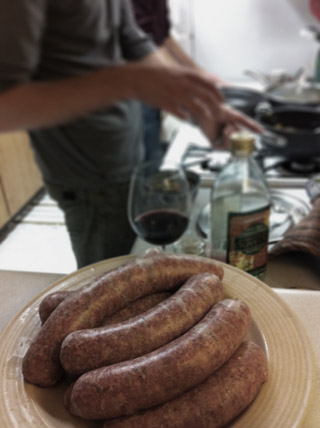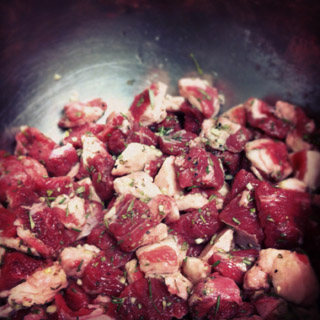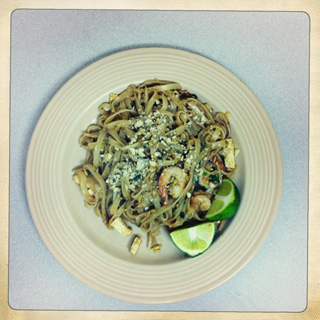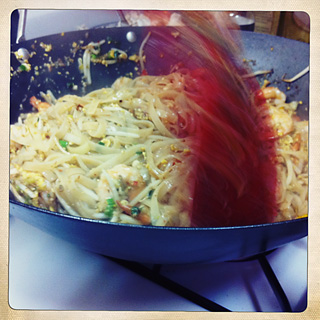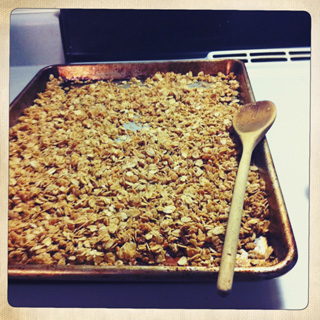Another post from Meg, savior of the blog...
Our tomatoes ceased ripening before our summertime pizza cravings subsided. Fortunately for us, tomatoes are not a necessary constituent of a tasty pizza. Recall the "white pizza:" leave off the tomato sauce and add a healthy dose of ricotta, parmesan, and mozzarella. I remember hating it as a kid, likely because the removal of tomato meant adding way too much cheese as a substitute for which, it seemed, my childhood palette wasn't quite ready. Even now, gobs of cheese are exactly what we shy away from when attempting to craft a satisfying pizza. We are here to offer you a tame twist on the thing we hated as kids, but can't seem to get enough of now.
In the true spirit of Meg and Graham cooking, we suggest making your own ricotta cheese. The thought of making cheese often scares otherwise talented kitchen explorers, but we are here to proclaim that soft cheese making (we haven't tried the hard stuff yet) is not difficult. Not at all. Heat up some whole milk, add a little citric acid, watch the curds separate from the whey, and let drain in a cheese cloth until desired consistency is reached. If citric acid sounds a little too science lab for you, others make it with buttermilk, vinegar or lemon juice. We leave it to you to explore the options and report back.
But sauce-less pizza with homemade cheese isn't the craziest part. Oh no.
We started putting grapes on our pizza.
It sounds like something a three year old child would request and, really, I was skeptical too. But, I came across this recipe a while ago and have been intrigued ever since. It wasn't until I started spending my Saturday mornings working for a fruit vendor at the Irvine farmers market that grapes became an abundant feature in our kitchen. So, having a mound of homemade ricotta still waiting to be used, I decided to adapt this recipe to our pizza ritual. It's so good I almost forgot that tomatoes once inhabited the same space. So, here you have it, a not-terribly-cheesy white pizza with some late summer grapes to keep life interesting.
White Pizza with Grapes
Makes Two Pizzas
2 Hours Prep, 30 Minutes to Cook

- 2 Pizza's Worth of Dough, try our Recipe
- 2 Cup Ricotta (see suggestions for homemade version above)
- 1 Cup Parmesan or other hard aged cheese, grated
- 4 Cloves Garlic, Minced
- 1 Cup Grapes
- 2 Shallots
- Few Tbsp. Olive Oil
- Few Pinches Thyme
- Few Pinches Salt and Pepper

- Make and prepare the pizza dough. Might we suggest our recipe...
- Cut grapes in half. Slice shallot into not-terribly thing rounds. Place together on a baking sheet with a little bit of olive oil and roast at 375F for 10-15 minutes. Check to be sure the shallots are not burning every now and then. Once the roasting is finished, adjust oven temperature to 450F.
- Stir garlic into ricotta. Add salt, pepper, and a few pinches of thyme to taste.
- Shape pizza dough and coat with a tablespoon or two olive oil. Spread ricotta mixture onto dough. Depending on the size of your pizza dough, 1 cup of ricotta might be too much or too little. Think "thin layer," not "how much can I fit on here." Sprinkle with parmesean (again, not too much) then top with the roasted tomatoes and shallots.
- Cook pizza at 450 for about 10 minutes. Let cool and serve.
NB: For the beer brewers out there, try adding some of your spent barley to your pizza dough crust. You won't be disappointed.
 All Said and Done
All Said and Done NB: If you are not a fan of manual labor, you may want to consider purchasing some volume of lime juice ahead of time.
NB: If you are not a fan of manual labor, you may want to consider purchasing some volume of lime juice ahead of time.
